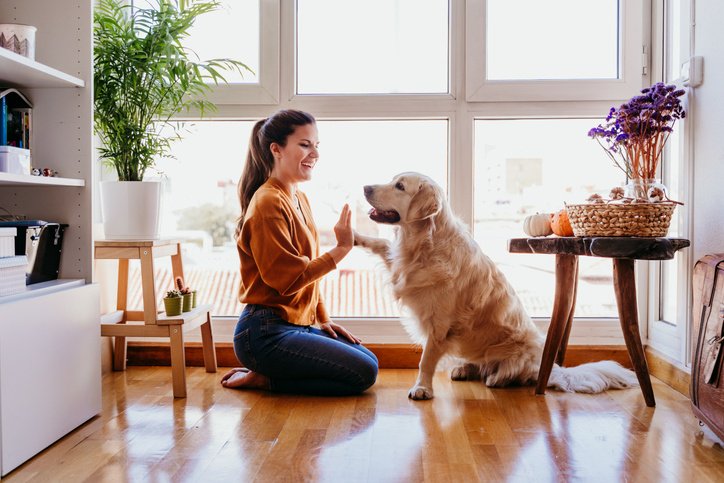With the government model tenancy agreement now amended to prevent blanket bans on lets with pets, letting agents and landlords are warned to be vigilant in identifying property damage caused by animals.
According to No Letting Go, the provider of inventory services, knowing what damage to look for can help property professionals ensure repairs are made before problems escalate while making relevant deductions from tenancy deposits.
The most common types of pet property damage
No Letting Go’s inventory experts point out that alongside the need for additional cleaning and removal of animal odours, there are a range of specific issues agents and landlords should look out for if their tenants have pets.
These include cat flaps being fitted to doors and marks on doors that may be caused when dogs are excited to go out. Also, cats could be responsible for torn and frayed carpets at the bottom of staircases.
Landlords and agents should look out for pet urine on the carpet, which can seep through and damage the underlay if not dealt with properly.
Pet hairs are also commonly found on the back of curtains and blinds by inventory clerks carrying out property visits, No Letting Go reveals.
Nick Lyons, Founder and CEO of No Letting Go, comments: “As the demand for pet tenancies rises and the government aims to make it easier for renters to keep animals, agents and landlords need to have the measures in place to deal with the increased risk of property damage.
“If managed effectively, allowing tenants to keep pets can encourage longer tenancies, increase demand for available properties and pave the way for higher average rents.
“However, if pet tenancies are mishandled, landlords may have to foot the bill for thousands of pounds of repairs, while agents’ chances of retaining management of a property could be jeopardised.”
Government plans to allow pets in rental properties
No Letting Go says that over recent months, the Government has made it clear it wants to make it easier for tenants to keep pets in rental properties.
The Dogs and Domestic Animals Accommodation Protection Bill, which proposes to make it a right for tenants to have domestic animals in rental properties, is currently awaiting its second reading as it moves through Parliament.
Meanwhile, in January 2021, the Government announced that it had rewritten its model standard tenancy agreement to include more ‘pet-friendly’ elements, making it easier for tenants to be able to keep ‘well-behaved’ pets.
Lyons says: “There are currently no rules to stop landlords from banning pets in their properties and they are not required to use the Government’s model tenancy agreement.
“However, it’s clear we are moving towards a scenario where blanket bans on pets are no longer an option as the Government looks to favour tenant-owning pets.
“With this in mind, it’s time for letting agents and landlords to start preparing for a more pet-friendly PRS by making sure they have the right insurance in place, compile a detailed inventory and monitor damage through regular property inspections.
“Having the necessary records and evidence of damage can make it easier for repairs and maintenance costs to be recouped from a tenant’s deposit at the end of a tenancy.
“There is no option to charge higher deposits for tenants with pets due to the Tenant Fees Act, so having a range of additional protective measures and procedures in place is absolutely vital to protect rental properties in the event that a tenant has pets.”

